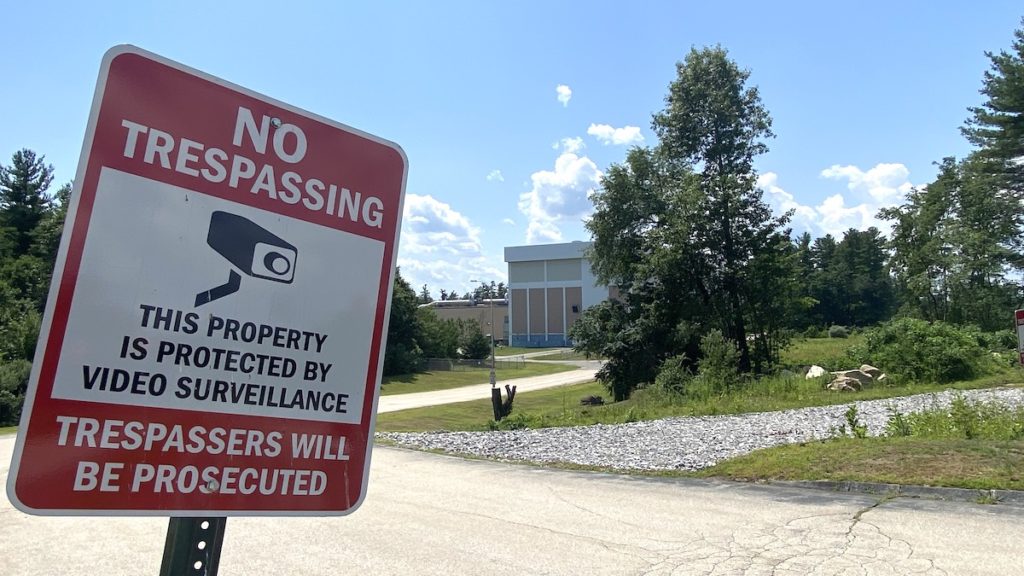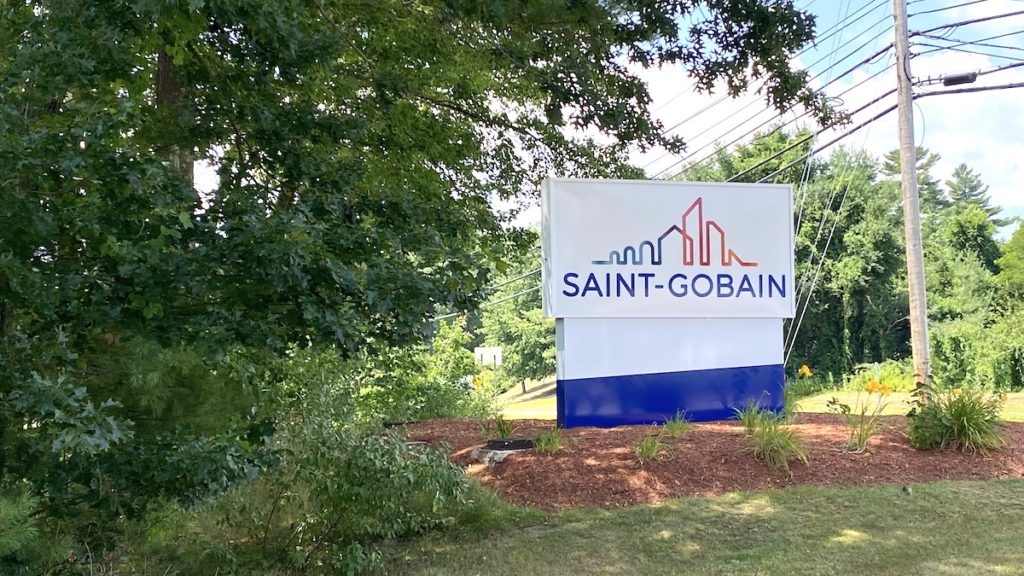The New Hampshire Department of Environmental Services’ prolonged inaction towards Saint Gobain Performance Plastics in Merrimack is allowing dangerous chemicals to poison the people of New Hampshire.
Across the country, per- and polyfluoroalkyl substances, or PFOA and PFAS — also known as “forever chemicals” — are contaminating groundwater systems that millions of people rely on. The overwhelming majority of PFAS contamination sites in Southern New Hampshire have been traced back to a lone corporate culprit: Saint Gobain.
Saint Gobain: ground zero of PFAS contamination in New Hampshire
A state report found that between 2009 and 2018 residents in Merrimack had a 42% higher occurrence of kidney cancer than residents in the rest of New Hampshire. At the same time, PFOA and PFAS levels in their blood are more than double the U.S. average. At least 3,691 public and private water wells within 65 miles of the Saint Gobain facility were found to have alarming levels of PFOA and PFAS.
The New Hampshire Department of Environmental Services found PFAS contaminated drinking water around Saint Gobain in 2016, and ordered the company to upgrade its facility to be able to eliminate the dangerous chemicals before releasing emissions into the air. Instead, in 2021 the DES found a new unauthorized bypass stack at Saint Gobain — a chimney that continues to spew the forever chemicals.
Emissions can travel miles in every direction, contaminating the air, drinking water and our bodies.
The Agency for Toxic Substances and Disease Registry found in late 2021 that more than “230 out of 2,745 wells surveyed near the Saint Gobain manufacturing plant had PFAS at levels that could harm infants or young children, and about 9% of those wells had levels that could harm all age groups.”
Dylan Banks’ story
“I was just a young college student and they sent me out to Saint Gobain. They didn’t tell us about the water or the PFAS contamination,” Dylan Banks told Liberation News. Banks worked for a pest control company that was hired by Saint Gobain in Merrimack to treat its grounds with pesticides. “Later I found out that they sent me to the scene of the biggest groundwater contamination that has ever happened in New Hampshire. If anybody knew what was going on they would have never gone out there.”
Banks worked with heavy chemicals as part of the job — but it was not until he began mixing the water on Saint Gobain’s grounds with those chemicals that he started developing adverse symptoms.
“On my first day back after the summer I put my equipment on and started salivating a lot. That was my last day on the job.”

Banks decided to leave, citing work-related illness as the reason. His employer never provided a workers’ compensation claim and Banks had to file the claim for himself. He still gets treated for symptoms of chronic fatigue, nausea and skin irritation that he developed while working on Saint Gobain’s grounds.
“We were using some of the deadliest water New Hampshire has ever seen. And we were mixing it with pesticides and spraying it back out.”
What are forever chemicals?
Per- and polyfluoroalkyl substances are a group of human-made chemicals that include PFOA and PFAS, and are known to the Environmental Protection Agency and the Centers for Disease Control to cause cancer, chronic diseases and birth defects. These chemicals have been common in industrial and household products for nearly 80 years, and in recent decades have been found in public and private water supplies.
PFOA and PFAS are used to create chemical coatings on items that are able to resist heat, oil, stains and water. Its very nature makes it highly difficult to eliminate and it is detrimental to natural life. Saint Gobain uses PFAS to manufacture a variety of products from electronic displays to non-stick grills.
The EPA has underplayed the pervasiveness of PFOA and PFAS, calling them “emerging contaminants,” and claiming they have limited understanding of the effects of contamination despite decades of knowledge of the risks that forever chemicals pose.
New Hampshire prohibits drinking water from having concentrations of 12 parts per trillion or more of PFOA, although the concentration levels found in the towns of Merrimack, Bedford, Manchester, and Londonderry significantly overshadow that. These communities also have the greatest population of Black, Latino and immigrant families. Low-income residents cannot readily afford to pay out of pocket costs for the damage control that is needed due to the contamination.
Inaction from the state
In response to this crisis, the New Hampshire Department of Environmental Services has merely advised Saint Gobain to hand out bottled water to affected residents for 5 years.
NHDES and the state of New Hampshire have provided no financial relief for impacted residents to help them cover the costs of advanced filtration systems, or switching from private to public water.
The NHDES rejected a cease and desist order issued by the town of Merrimack against Saint Gobain. It was not until December 2021 that NHDES asked the state’s attorney general to get involved in the case. Since then, not much has been accomplished, besides an agreement made between the state and Saint Gobain to provide “alternate” water sources to 1,000 properties.

When Banks asked why the state is not providing medical monitoring or tests for exposure to PFAS, a representative for the NHDES repeatedly told him that they didn’t have the funding or the technology to detect and trace the contamination.
In Vermont, Saint Gobain was held accountable and ordered to pay $34 million to residents impacted by PFOA contamination originating from its facility in Bennington, which closed down in 2002. The settlement also requires Saint Gobain to pay up to $6 million for a 15-year medical monitoring program. There is no clear reason why New Hampshire will not do the same.
“A lot of people in these small towns rely on the big corporations for work, and those corporations don’t get the negative spotlight because they’re supplying people with jobs. But at the same time, they’re killing people,” Banks said.
What can be done?
It is the responsibility of state regulators with the DES and Department of Health and Human Services to proactively respond to the needs of the people of Merrimack and surrounding towns, and hold Saint Gobain accountable for its pollution.
Handing out bottled water is not a viable response to a public health disaster.
If the state’s true purpose was to fight for the health of the people and the environment of New Hampshire, they would provide testing of water supplies, free of charge. The state could cover the costs for those who want to switch from their contaminated private wells to public water. They could set up permanent medical monitoring for impacted residents, and make sure they receive the treatment they need. Fines imposed on the company could go straight to the public.
And, of course, NHDES must shut down Saint Gobain — as many residents and some city officials are demanding.






